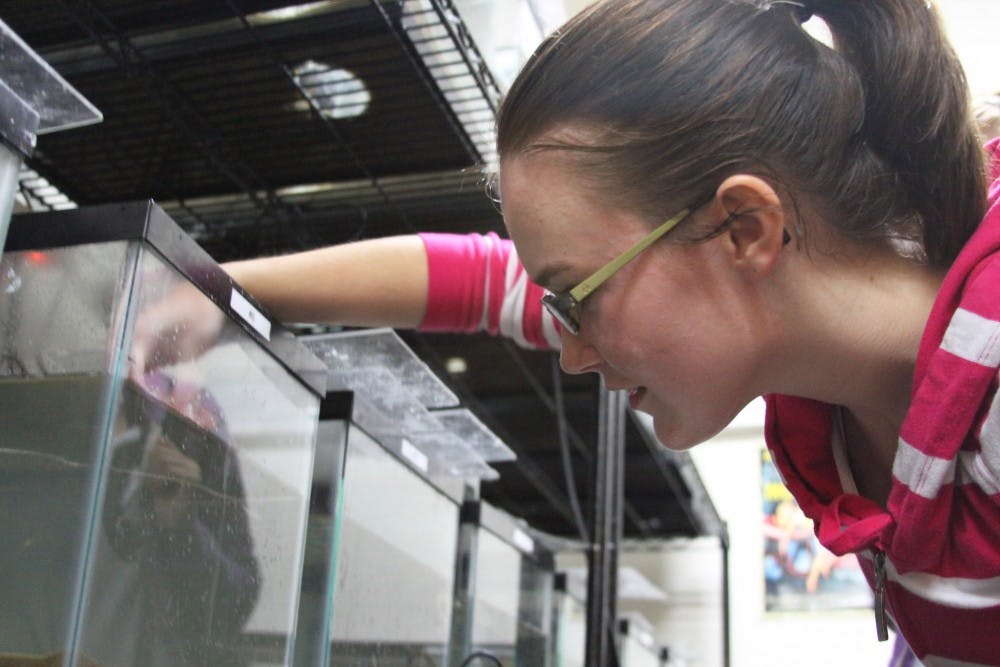Jacob Fuhrer |
Most people are used to seeing bits and pieces of them along the shoreline. But one UP professor is offering students a chance to see living crabs up close.
On Friday, Oct. 3, biology professor Tara Maginnis will host a laboratory open house to showcase her collection of crabs and other sea creatures.
In Maginnis’ Crab Lab, she and her students study the behavior of crabs and their ability to lose and regenerate limbs.
Ryan Kain, one of Maginnis’ two research assistants, spent the summer counting crab eggs with his research partner, Clayton Steed.
“We counted, like, 250,00 crab eggs,” Kain said.
Kain and Steed are researching crabs’ ability to reproduce after losing a limb. They’re studying a group of crabs who have lost limbs, another group that has lost and regenerated limbs and a control group of crabs with all limbs intact.
Kain says they are among the first to work on this type of study. He and his partner are at the data analysis stage, using their raw data to assess whether the results of the study are accurate. He says their research has a good chance of being published.
Maginnis said crabs make interesting study subjects because they are able to regenerate limbs unlike humans. If we learn enough about limb regeneration in crabs, Maginnis said, there is potential for applying the research to humans.
Maginnis said the lab also gives students a chance to work hands-on in a lab environment, an opportunity undergraduate students rarely get.
To help maintain the lab’s marine life, Maginnis has ten students tending to the crabs and perform maintenance on the tanks. This includes two full-time research students who work during the summer.
Since Maginnis opened the lab in the fall of 2010, the lab has expanded to host 30 aquarium tanks with a total of nearly 1000 gallons of water. At times, the crab lab is home to nearly 500 crabs. Around 75 are there now.
Megan Gogal, another biology student working in the lab, enjoys the opportunity to personally catch the ocean critters at the Oregon Coast, thanks to a permit Maginnis obtained through the National Oceanic and Atmospheric Administration.
“I loved going lowtiding,” Gogal said, explaining that lowtiding is “when you go out and there is a really really low tide so rocks are exposed,” making it easy to see and remove the critters.
Overall, Maginnis is pleased with the progress she and her students have made in the Crab Lab.
“I’ve had four successful summers so far,” she said. “We’ve already gotten one paper published with another one in review.”
Maginnis and her students encourage everyone to come to the open house and see the critters up close. “It’s a mini-aquarium,” Maginnis said.
Jacob Fuhrer is a reporter for The Beacon. He can be reached at fuhrer17@up.edu.








